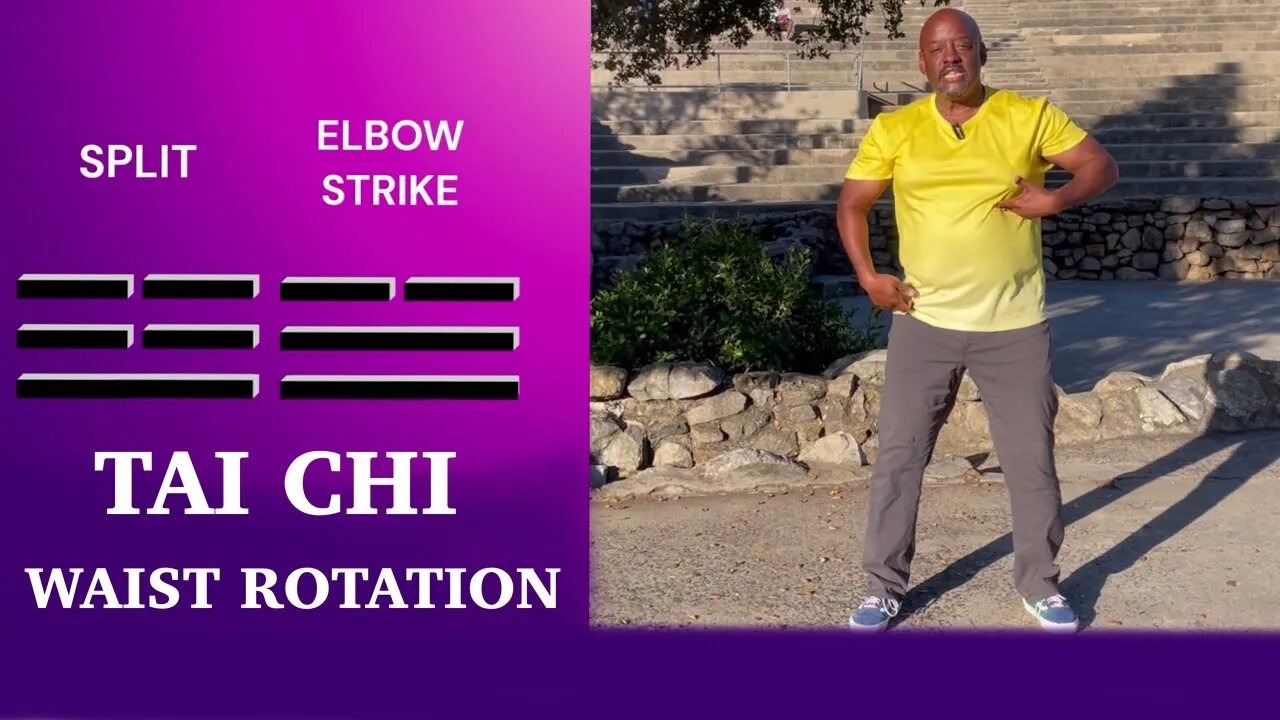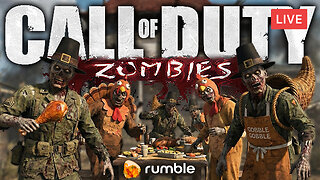Premium Only Content

Tai Chi Core Rotation-Split and Elbow Strike Trigram and Technique Examination
In this video I discuss details of Tai Chi waist rotation and hip power to in the 13 Postures. I focus on the Postures of Push and Pluck in this video, providing my personal analysis of the relationship between the Tai Chi Trigrams and the anatomy of the waist and the hips. There is no accepted anatomical correlation between the Trigrams and the 13 Postures, but I believe there is a way to correlate them. In this series of videos I will go through each of the 13 Postures and their corresponding Trigrams and show you the relationship that I have clearly found between them and the anatomy of the core. I believe having an anatomical basis for understanding Tai Chi movements can help with your Tai Chi practice and help you translate Tai Chi movement into normal daily activities like walking, running, climbing stairs, and more. I have been teaching walking technique on YouTube for almost 8 years, and I have used my analysis of the Trigrams to develop the Walking Code. I have put out a small number of videos directly related to the anatomy of the Trigrams which have gone largely unnoticed and/or completely ignored. It could be that my analysis is incorrect, but I am very doubtful of that since my analysis correlates with all of the trigrams and with all of the movements in the Tai Chi forms, which I cannot imagine being coincidental. I am not a Tai Chi instructor, but I have 27 years training, teaching, and performing Argentine Tango. The core movements in Tai Chi and in Tango happen to correlate perfectly. I was able to use my Trigram analysis to perfect my tango movement, and this also helped to confirm the functionality of the analysis. I will give a brief description of the analysis here and in the video I demonstrate how the core movement patterns translate to the energies of Pluck and Push.
Core Pattern Analysis.
Trigrams: Each trigram represents three elements of the core.
The upper our outside line represents power from the hips, either flexion or extension. Hip extension is a solid YANG line. Hip flexion power is represented by a broken Yin line. This is because if you turn into a flexing hip.
The middle line represents contralateral rotation of the upper waist, primarily from the external obliques and supporting muscles. These muses turn the upper torso toward the opposite side of the body. Turning the upper waist into an extending hip is a Yang movement because the rotation is essentially bounced off the extending hip, causing and outward projection of energy. On the other hand, if you turn into a flexing hip, the body rotation will be accepted into the flexing hip rather than being projected off of it. This is a Yin energy.
The lower line represent rotation of the lower waist, from the lower abdominal (namely the internal obliques and supporting rotator muscles. These muscles create ipsilateral rotation, turning the lumbar spine and pelvis toward the side of the active muscle action. Yin and Yang work the same for the lower abs as for the upper abs. Turning into an extending hip in Yang and turning into a flexing hip is Yin.
Further detail of Yin and Yang:
Turning the waist toward and extending hip is Yang. Turning the waist away from an extending hip is Yin.
Turning the waist toward a flexing hip is Yin. Turning the waist away from and extending hip is Yang.
Split: Upper Line represents hip flexion. This is Yin energy. The upper waist turns toward the flexing hip. This is represented by the second line which is also broken, Yin energy. The flexing hip receives the rotation of the upper waist as opposed to bouncing the energy outward, which is what happens when turning into an extending hip
____ ____
____ ____
_________
Elbow Strike: Elbow Strike has a flexing hip, which is Yin energy. The upper and lower waist both turn away from the flexing hip. This is Yang energy, represented by two solid lines. Elbow Strike is used mostly in stepping actions, including advancing steps, retreating steps, stepping left, stepping right, and central equilibrium.
____ ____
_________
_________
-
 15:32
15:32
IsaacButterfield
20 hours ago $1.89 earnedAussie Reacts To UNHINGED Woke TikToks!
9.47K5 -
 3:24:28
3:24:28
PandaSub2000
12 hours agoNintendo Platformers - Thanksgiving 2025 Special | ULTRA BEST AT GAMES (Original Live Version)
28.8K3 -
 1:03:06
1:03:06
MetatronGaming
1 day agoThis is the scariest game ever (for an Italian)
19K6 -
 1:09:35
1:09:35
The White House
7 hours agoPresident Trump Participates in a Call with Service Members
41.3K55 -
 5:20:01
5:20:01
a12cat34dog
6 hours agoHAPPY THANKSGIVING - I APPRECIATE YOU ALL SO MUCH {18+}
20K3 -
 24:55
24:55
Jasmin Laine
1 day agoCarney BRAGS About ‘Investment’—Poilievre Drops a FACT That Stops the Room
28.3K27 -
 2:14:15
2:14:15
SIM_N_SHIFT GAMING
4 hours ago $1.39 earnedGRAND THEFT AUTO WITH FRIENDS
14K -
 6:43:27
6:43:27
VikingNilsen
14 hours ago🔴LIVE - VIKINGNILSEN - THE NEW PRELUDE - SOULFRAME
12.9K -
 7:45
7:45
Colion Noir
1 day agoThey Made Glock “Unconvertible” To Please Politicians, Guess What The Internet Did?
19K23 -
 23:42
23:42
The Kevin Trudeau Show Limitless
1 day agoThe Brotherhood’s Ancient Mirror Code Revealed
20.1K8